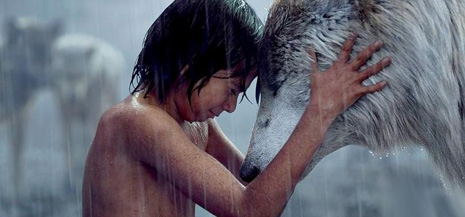|
|
Movie Review: The Jungle BookBy Ben GruchowApril 20, 2016
Here, we open as Mowgli (Neel Sethi) is being raised as a cub within his wolf pack, under the alpha Akela. Teaching him is the panther Bagheera (Ben Kingsley). A drought has parched most of the jungle, and the animals have struck a peace treaty around the sole remaining water hole. It's here that we first meet Shere Khan (Idris Elba), who is none too pleased at the presence of a “man-cub” in the jungle, nor his inability to do anything about it because of the treaty. There is a backstory between the two of them, one that honors the spirit of their relationship in Kipling’s Mowgli’s Brothers if not the actual incident. Regardless of treaty, it's decided that the jungle is no longer safe for Mowgli, and Bagheera is to accompany him back to the human village (when Mowgli first sees this, he's understandably unimpressed; the village, alluded to in respectful terms, is a tiny pinprick of solitary light against the backdrop of endless foliage). During the course of the journey, we meet the expected Book mainstays: Baloo the bear, Kaa the python, King Louie the (pause while I look this up) Gigantopithecus. It is, then, not very different from the broad strokes of the other films. What sets it apart is the commitment to its world in terms of look and feel, and a clearer sense of stakes and risk. When King Louie holds Mowgli in his court, surrounded by minions, there is a threat posed by the primate that's carried in the eyes and movements and expressions. This requires skill in character psychology and timing, and it's a skill that exists outside of the raw technicalities of photorealistic CGI. Indeed, the movie's computer-generated cast succeeds partially because that realism is married to an unsettling perception of intelligence that (miraculously) doesn't even dent the tactile reality of them as animals - often predators.
|

|
|
|

|
Friday, November 1, 2024
© 2024 Box Office Prophets, a division of One Of Us, Inc.


